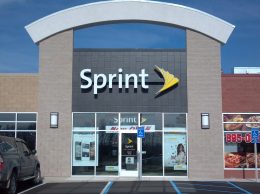With the Federal Communications Commission’s release of the long-awaited Open Internet Order on net neutrality and broadband regulation at the end of last month, its plate is cleared to tackle the proposed Comcast-Time Warner Cable merger that has been under review for a year.
If approved — an outcome analysts feel is likely — the merger would more than double Comcast’s market share in California and create a Comcast-Cox duopoloy among tri-county cable providers.
If the deal goes through, South Santa Barbara County, served by Cox, will be the only area within the region that doesn’t fall under the Comcast flag.
At the state level, the California Public Utilities Commission will vote March 26 on whether to approve the merger, with some stipulations it set forth in a report last month that include improved diversity benchmarks, expanded access and upgraded infrastructure.
In its Feb. 13 decision, a CPUC judge argued that Time Warner customers would likely experience poorer customer service, less reliable connections and fewer program choices and services “as a result of the merger if [the] transaction is approved without conditions.”
The FCC has a deadline to vote on the issue by March 29, but the body is likely to push that date back.
According to Christopher McDonald, vice president of government affairs for Comcast’s western operations, tri-county subscribers who would be switched from Charter or Time Warner service to Comcast cable will experience little service interruption and all existing contracts with local news affiliates will be followed.
What will require a lot of time and attention is updating the tri-county’s web of legacy infrastructures outfitted for an array of mostly outmoded technology, McDonald said. He could not provide a timeline but did note that TWC and Charter both have yet to execute an all-digital upgrade.
While Comcast’s network has traditionally been built up around residential neighborhoods, McDonald said the company will be concentrating on developing connectivity in city centers and business corridors. “And I think what we’ve shown, with the NBC Universal merger [in 2013], is that we’re going to invest in the things we purchase,” McDonald said.
Under the proposed merger agreement, Comcast would take over all of the Time Warner systems in Southern California, including virtually all of Ventura County.
In a second stage transaction, Comcast and Charter would engage in a series of swaps that would give Comcast more systems on the West Coast and Charter a number of systems in Midwestern states. Those swaps would put San Luis Obispo County’s cable systems, currently under the Charter banner, into the hands of Comcast.
McDonald said the combination of mergers and swaps, as proposed, would mean Comcast’s national share for cable and broadband would remain under 30 percent.
Today, Comcast is one of the smallest cable players in the region. Its territories include the Santa Maria Valley and the Santa Ynez Valley.






 Print
Print Email
Email
















